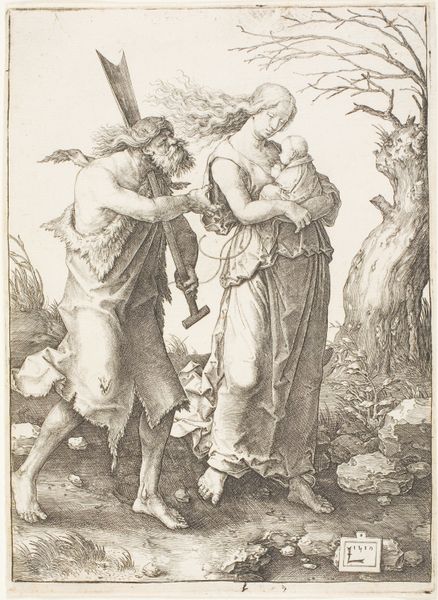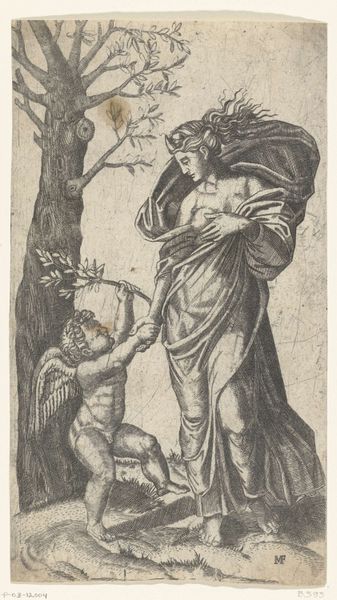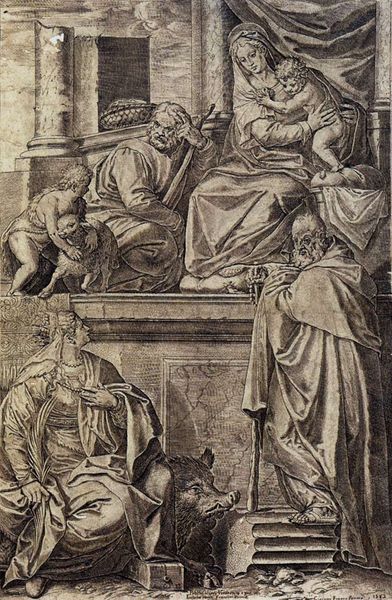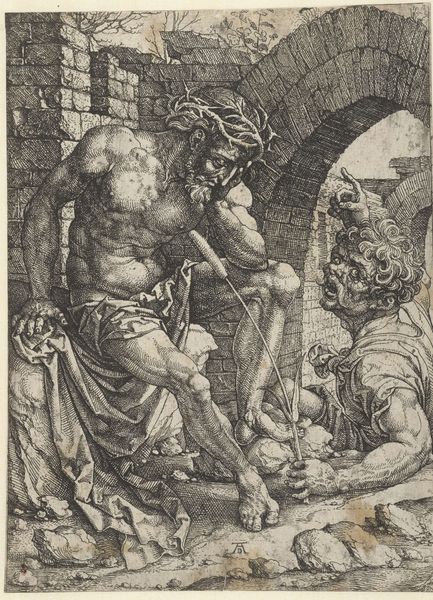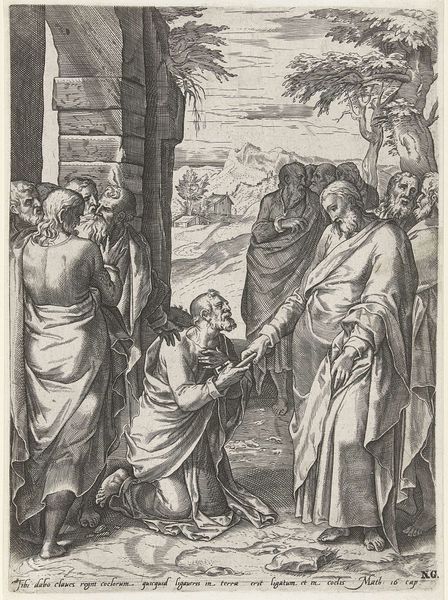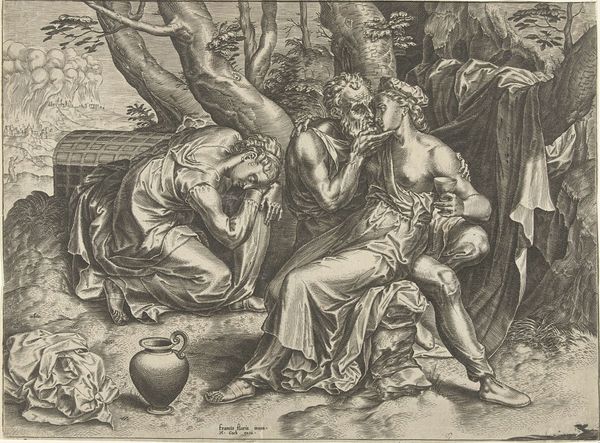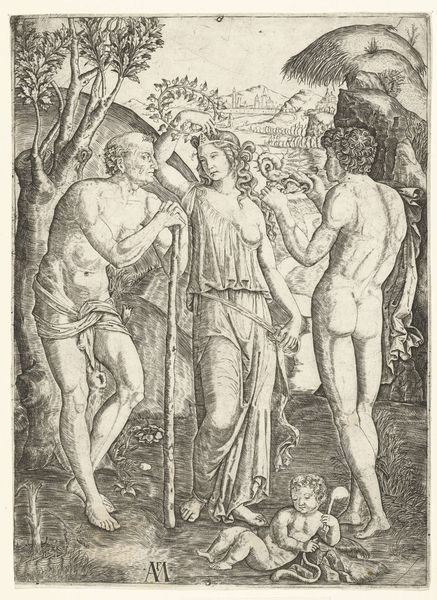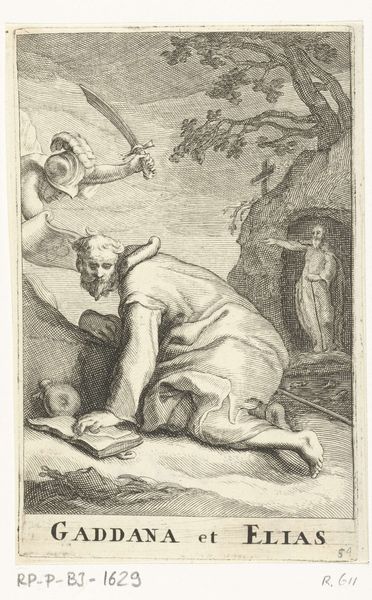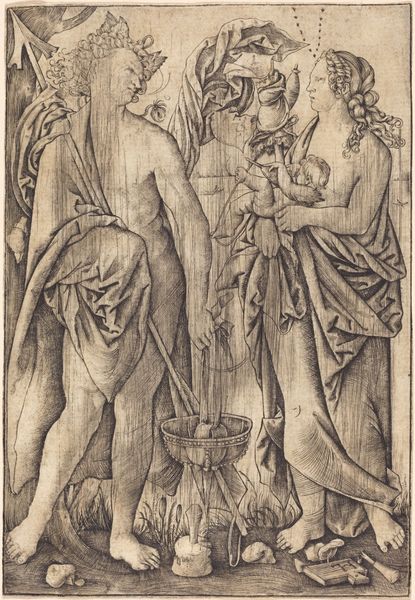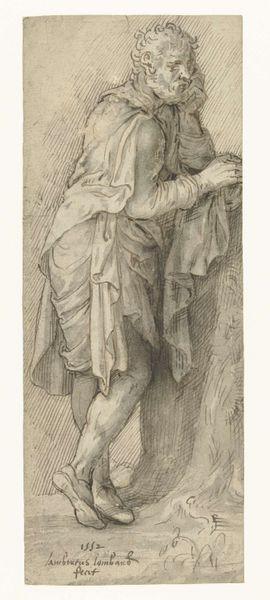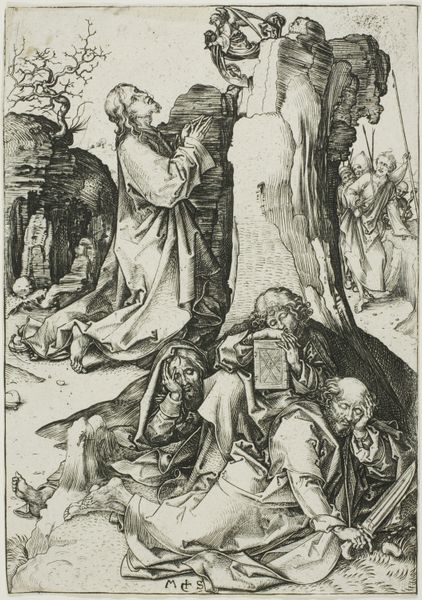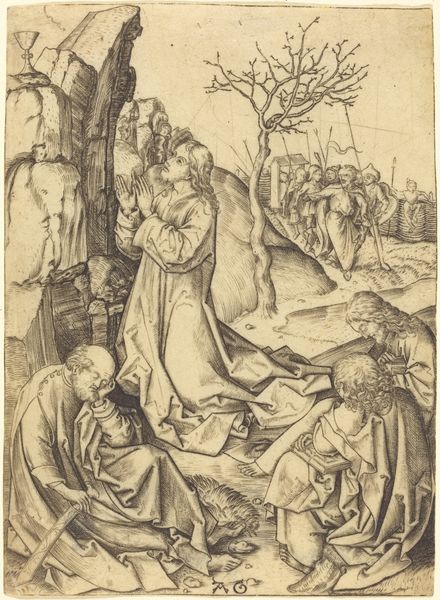
painting, oil-paint
#
portrait
#
painting
#
oil-paint
#
landscape
#
figuration
#
11_renaissance
#
oil painting
#
history-painting
#
italian-renaissance
Copyright: Public domain
Curator: Let's spend a moment with Filippino Lippi's "The Penitent St Jerome," an oil painting dating back to 1485, a remarkable piece from the Italian Renaissance. Editor: What strikes me immediately is the solitude. You've got this incredibly frail figure set against this almost brutal landscape. The vulnerability is palpable; he seems swallowed up by it all. Curator: Indeed. Lippi presents Jerome not as the powerful scholar, translator of the Bible, but as a figure stripped bare. This depiction taps into a broader historical shift, a Renaissance interest in the individual human experience, even, and perhaps especially, in relation to faith. Editor: Absolutely. It’s like Lippi's trying to peel back the layers of sainthood. Jerome is grasping his chest, almost protective, but the open landscape seems to hint at a past left behind and a future unknown. I wonder, what exactly he feels regret for, or at least something along those lines? Curator: Traditionally, the repentance narrative positions Jerome renouncing worldly pleasures for devotion. This work underscores the power of repentance in Renaissance religious thought, something heavily encouraged by various reform movements at that time. Editor: Reform or not, the colours are just phenomenal. That faded scarlet cloth looks very lonely, tossed down near the bare tree, in contrast to the dark browns and greens—it feels like a forgotten sin made vivid by colour. Curator: And, of course, the inclusion of landscape itself represents a shift in artistic focus. The setting is more than just backdrop; it's a key element that serves as witness and catalyst to the spiritual drama unfolding. Editor: A wild, stark beauty. Almost an unforgiving landscape, which is probably very convenient. Anyway, this depiction of St. Jerome is incredibly humane—he looks real, he aches, he maybe shivers in that thin robe… Makes you want to give him a hug and tell him that the Latin Vulgate is indeed an excellent translation! Curator: Perhaps, but Lippi also leaves him wrestling with larger implications about knowledge and the relationship between God and man during an era of tremendous religious transformation. Editor: Absolutely. And as someone gazing on it, the invitation into contemplation and feeling the humility and fear. That is just one of the signs of masterful artworks that speak to us even today!
Comments
No comments
Be the first to comment and join the conversation on the ultimate creative platform.

